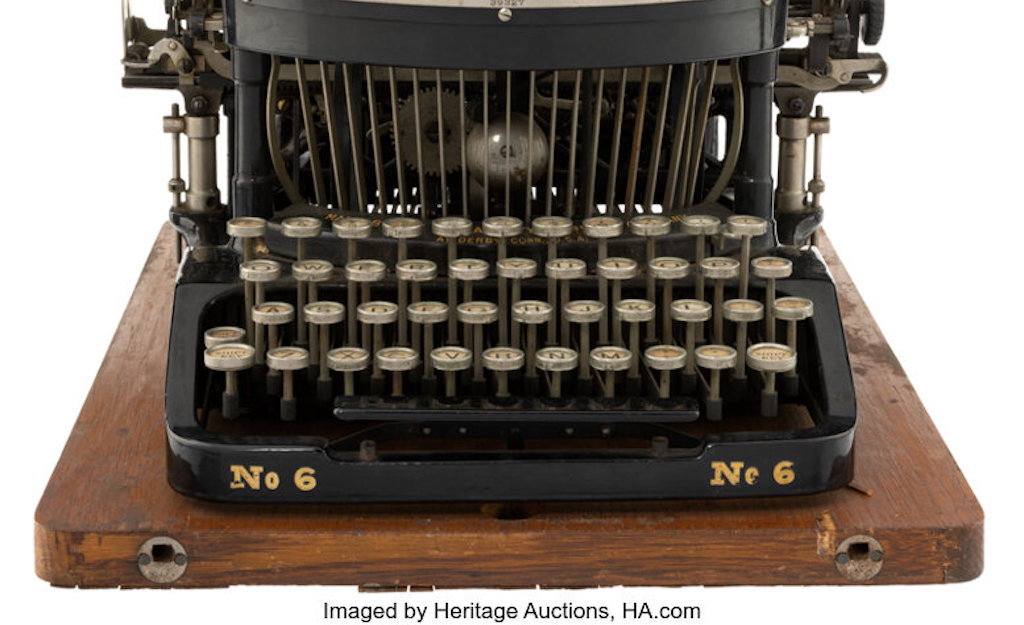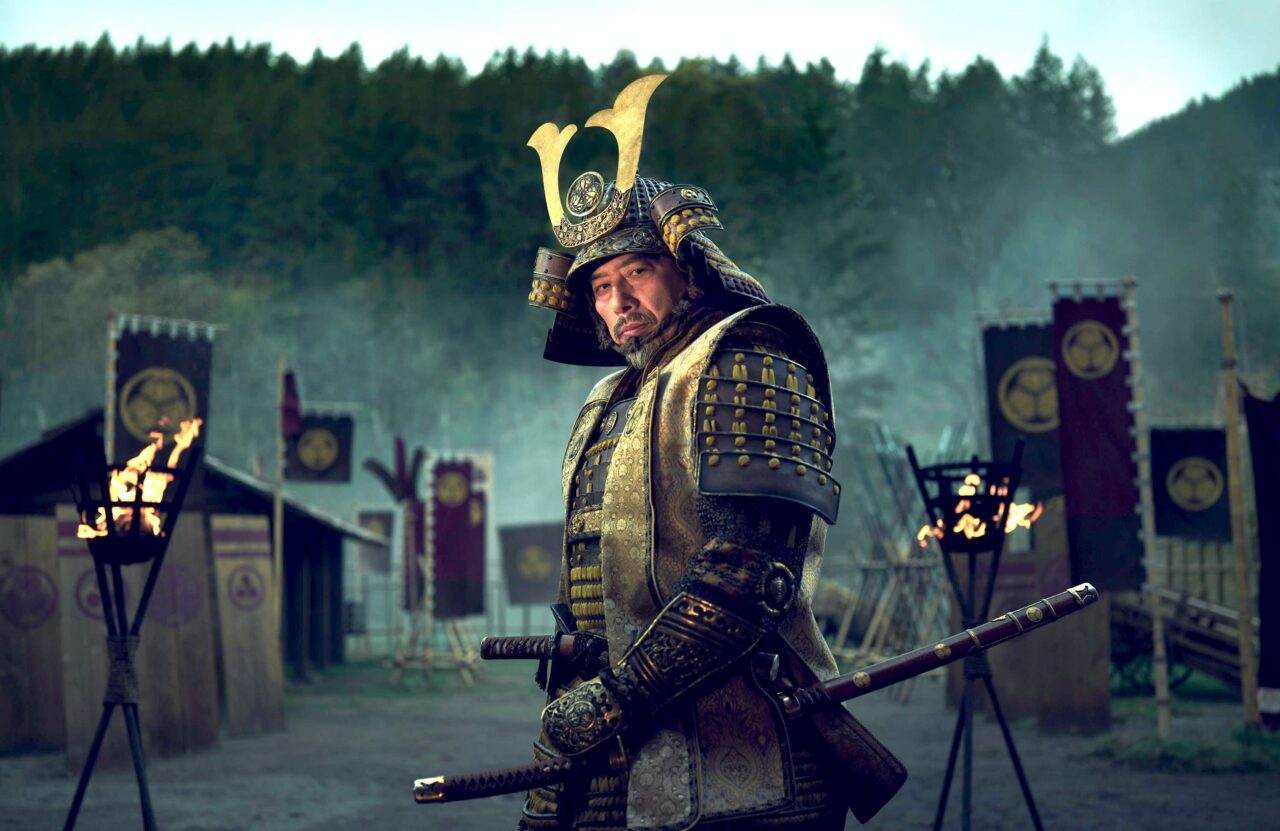The tale of Heritage Auctions’ February ’22 Historical Manuscripts Signature® Auction simply can not be told without a good typewriter – specifically without a typewriter that was one of the last owned by one of the most popular and important American authors.
The love-hate relationship Mark Twain (whose real name was Samuel Clemens) had with typewriters is well-documented. The author known best for his stories about Tom Sawyer and Huckleberry Finn soured on the devices (he acquired his first in 1874) that were, according to him, “full of caprices, full of defects – devilish ones.”
He was so firm in his dislike of typewriters that he took his disdain a step further in a letter to the Remington Company on 10th March 1875, shortly after they began marketing the device, steadfastly refusing to lend his name to a testimonial.
“Please do not use my name in any way,” he wrote. “Please do not even divulge that fact that I own a machine. I have entirely stopped using the typewriter, for the reason that I never could write a letter with it to anybody without receiving a request by return mail that I would not only describe the machine, but state what progress I had made in the use of it, etc., etc. I don’t like to write letters, and so I don’t want people to know I own this curiosity-breeding little joker.”
But the fact is that the beloved author did own typewriters, one of which will come to auction for the first time in the upcoming Heritage event. Twain’s personally owned Williams No. 6 typewriter, has become one of the most remarkable American literary relics of the 20th century.
Sandra Palomino, director of historical manuscripts at Heritage Auctions says, “In 1883, [Twain] became one of the first authors to type a manuscript when he delivered a typed copy of Life on the Mississippi to his publisher.”
Towards the end of his life, Twain purchased this beautiful and impeccably provenanced Williams No. 6 “grasshopper” typewriter, which he owned from 1908 until his death in 1910. The company produced it from 1904 to 1909, but the serial number on this example dates its manufacture to 1908; the Twains moved to Stormfield, his beloved mansion in Redding, Connecticut, in the spring of that year. This model also marked a significant improvement from the earliest machines, because its design allowed the typist to view text as it was written, thanks to the “grasshopper” mechanism that pushed the type bar up as the key was struck.
This remarkable relic was given by Twain’s daughter, Clara, to Harry B Iles, the superintendent and groundskeeper at Stormfield, to thank Iles for his years of service. It remained in the Iles family until it was sold in 1982, and again in 1990 to the consignor, a close friend of Iles’s son, Harry.
Provenance documentation accompanying the item includes the 1982 purchase receipt signed by Harold Page, Harry B Iles’s great-grandson, and a signed and notarised statement of provenance from the current consignor, which details the 1990 purchase as well as their decades-long relationship with the Iles family.
 Other highlights in the auction include, but are not limited to:
Other highlights in the auction include, but are not limited to:
- Martin Luther King Jr. Inscribed and Signed Copy of Ebony Magazine. [Chicago]: Johnson Publishing Company, 1965 is from the May 1965 issue covering the historic Selma-to-Montgomery marches in Alabama. The front wrapper is inscribed and signed in blue ballpoint pen by King: “To my Friend / Claude Wyatt / With Warm Personal Regards / Martin Luther King Jr.” Rev. Claude S. Wyatt Jr. and his wife Rev. Addle L. Wyatt were prominent civil rights activists who founded Chicago’s Vernon Park Church of God in 1956 and were closely affiliated with King until his 1968 assassination, and marched with him at the 1963 March on Washington and the 1965 Selma to Montgomery march. Five months later, President Lyndon B. Johnson signed the 1965 Voting Rights Act into law. The photograph on the cover was taken March 25, 1965 shortly before the final rally at the state Capitol where King delivered his “How Long, Not Long” speech. Pictured from left to right are Rev. Ralph Abernathy, Ruth Bunche, Ralph J. Bunche, Dr. Martin Luther King Jr., and Coretta Scott King.
- Confederate Colonel John S. Mosby’s Farewell Address to His Rangers is one of the most important military addresses of the Civil War. Then a colonel of the 43rd Virginia Cavalry, popularly known as “Mosby’s Rangers,” Mosby issued his famous farewell order to his cavalrymen in the closing days of the Civil War. The April 9, 1865 surrender of Robert E. Lee at Appomattox meant the end for Mosby’s Rangers. Rather than surrender his command to the Union, Mosby chose to formally disband the regiment.
- Three Fair Copy Letters Between Generals George Washington and Thomas Gage in the Hand of John Hancock Regarding the Treatment of Prisoners capture an exchange between Washington and Gage on the treatment of those captured at the Battle of Bunker Hill, one of the most significant battles in the American Revolution. In the first letter, sent Aug. 11, 1775, Washington protested Gage’s treatment of American officers imprisoned in Boston before warning that he would regulate his own conduct toward British prisoners according to Gage’s. In the second, sent two days later, Gage assures Washington, in part, that American prisoners “… have hitherto been treated with Care and Kindness, and more comfortably lodged than the King’s Troops in the Hospitals,” before accusing the Americans of abusing British prisoners: “My intelligence from your Army would justify severe Recrimination.” Washington replied Aug. 19, informing the British general that he has found no evidence of mistreatment of enemy soldiers before launching into a passionate defense justifying the American’s quest for liberty. The first two letters were later published in The London Gazette. Rather unsurprisingly, the British government chose not to print Washington’s Aug. 19 reply.
- A document signed by George Washington and Thomas Jefferson, appointing “Samuel Tredwell of North Carolina…Inspector of the Revenue for the Port of Edenton and do authorize and empower him to execute and fulfil the Duties of that Office according to Law…” This document is signed as president, “Go: Washington” and countersigned by Secretary of State Thomas Jefferson, and features an embossed paper presidential seal intact at lower left.
- A John F. Kennedy Autograph Letter Signed to a Crew Member of the PT 109 — in 1943, Kennedy, then a 26-year-old Lieutenant, commanded a Navy patrol torpedo boat that the Japanese destroyer Amagiri cleaved in half in the South Pacific waters surrounding the Solomon Islands. The collision sent a fireball of igniting aviation fuel 100 feet into the sky and flung 13 crew into the water, killing sailors Andrew Jackson Kirksey and Harold Marney. Kennedy personally rescued the most seriously wounded of the survivors and ultimately guided his remaining crew on a four-hour swim to the closest island tiny enough to lack a Japanese base, from where he led the men to eventual rescue.
Images and information about all lots in the auction can be found at HA.com/6260.





